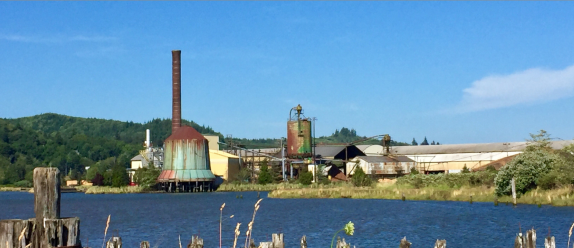
The Ten Things Brownfield Developers Need to Know about Vapor Intrusion
May 19, 2023
By: Stephen Kirschner
The Federal Infrastructure Act is providing renewed and increased incentives for the redevelopment of brownfield sites, both urban and rural. Most voluntary cleanup programs for brownfields allow the developer (private or public) to focus remediation on eliminating risks with source treatment and engineered controls. Many brownfield developers will need to address the potential for vapor intrusion (VI) during the due diligence or development stage. Fortunately, the science and engineering associated with assessing and mitigating potential risks associated with VI have improved significantly, to the extent that mitigation costs can be reasonably estimated. Montrose is a leading provider of environmental and grant funding services to brownfield developers. We offer the top ten things a brownfield developer needs to know about VI.
Key Takeaways
- Understanding and addressing vapor intrusion should be incorporated into the very early stages of brownfield redevelopment.
- Engage an experienced consultant.
- The planned use and layout of occupied structures impact how to best address a vapor intrusion issue.
- Guidance and regulations vary from state to state so be sure your consultant has the right experience.
- Grant $$ or low-interest loans for assessment and remediation may be available.
What causes vapor intrusion?
Vapor intrusion into buildings can occur from soil and/or groundwater impacted by volatile chemicals. Sources are commonly former on-site or existing nearby gasoline stations, dry cleaners, repair shops, and industrial facilities.
How does vapor intrusion occur?
Volatile chemicals create vapors that move vertically and horizontally through the subsurface and can enter a building through floor cracks, sumps, elevator pits, and utility trenches.
Are certain buildings more susceptible to vapor intrusion?
Yes. Brownfields oftentimes have older buildings that may be desirous of repurposing. Older buildings with basements, dirt floors, stone foundation walls, tunnels, below-grade utility wall penetrations, old and poorly maintained floors, and shallow groundwater conditions tend to be more susceptible to vapor intrusion.
When should I be looking for vapor intrusion?
The potential for vapor intrusion should be assessed during the initial due diligence period of a real estate transaction or redevelopment plan. The standards that can be used are ASTM E1527-21 for performing Phase I Environmental Site Assessment (ESA) and ASTM E2600-08 for assessing vapor intrusion into structures.
Do I need to be concerned about vapor intrusion if a property does not have a commercial or industrial history?
Yes. Vapor intrusion has been known to create unsafe indoor air concentrations at properties with no history of releases. The source of vapor intrusion can originate hundreds of feet from your site via a groundwater plume that has migrated beneath your site. Brownfields tend to be in developed areas, and it is important to be aware of both current and historical uses of nearby properties.
How do I know if a building or my property has a vapor intrusion problem?
An ASTM Phase II ESA can be performed that includes collecting soil gas samples immediately below the floor slab, or in the location of a planned building, and having the samples tested at a laboratory. The number of samples needed will depend on the size of the area and where the potential source of the vapor intrusion is located.
How do I fix a vapor intrusion problem in an existing building?
A vapor intrusion mitigation plan starts with understanding the planned use (residential, commercial, industrial, mixed) and how the vapors are entering the building. The simplest solutions include crack sealing and the installation of radon-type sub-slab depressurization systems to control the vapors. These approaches typically require annual inspections and long-term maintenance. Long-term solutions may include finding, treating, or removing the source of the vapors.
Can I prevent a vapor intrusion problem in new buildings?
Yes. During the construction of new buildings, the installation of either a passive or active vapor mitigation system can be very cost-effective and has become common in new construction. In addition, or as a substitute, vapor barriers can be installed. Many types of membrane systems can be installed immediately before a concrete floor is poured.
Will I have to operate the vapor intrusion mitigation system forever?
Not necessarily; however, a vapor mitigation system is a long-term commitment and requires annual maintenance if source treatment is not planned. A vapor mitigation system can be shut down permanently if the original source has been treated, eliminated, or naturally attenuated. A demonstration with new sub-slab soil gas data, once a system has been turned off for a period of time, is usually required. Specific criteria will vary from state to state.
Are there funds to help address vapor intrusion at brownfields?
Yes. USEPA and state brownfield grants can be utilized to help address vapor intrusion, whether the need is assessment or remediation. Our Montrose funding experts can help brownfield developers obtain these types of grants.
Do you have a question about these topics?
Don’t hesitate to contact our experts and explore the best solution for your environmental challenges today.
 Steve Kirschner
Steve Kirschner
Principal
Steve has worked in the construction, environmental, and geotechnical engineering industries since 1983. Steve has extensive experience assessing the extent and nature of the soil, sediment, soil vapor, indoor air, and groundwater contamination, developing and evaluating remedial alternatives, and performing risk-based evaluations for CERCLA, RCRA, and state oversight projects and has authored multiple papers on chlorinated solvent groundwater plume investigation and remediation. Steve works closely with his clients to develop remedial solutions that balance risk reductions, short and long-term capital costs, future land restoration use, and third-party stakeholder interests. Steve has developed and spoken at multiple stakeholder community meetings on behalf of his clients. His areas of expertise include long-term site strategy development, cost-benefit analysis, in-situ groundwater treatment approaches, constructible civil/environmental designs, risk communication, community relations, and regulatory negotiations. Steve graduated from Drexel University in Philadelphia, with a Bachelor’s Degree in Civil Engineering.

